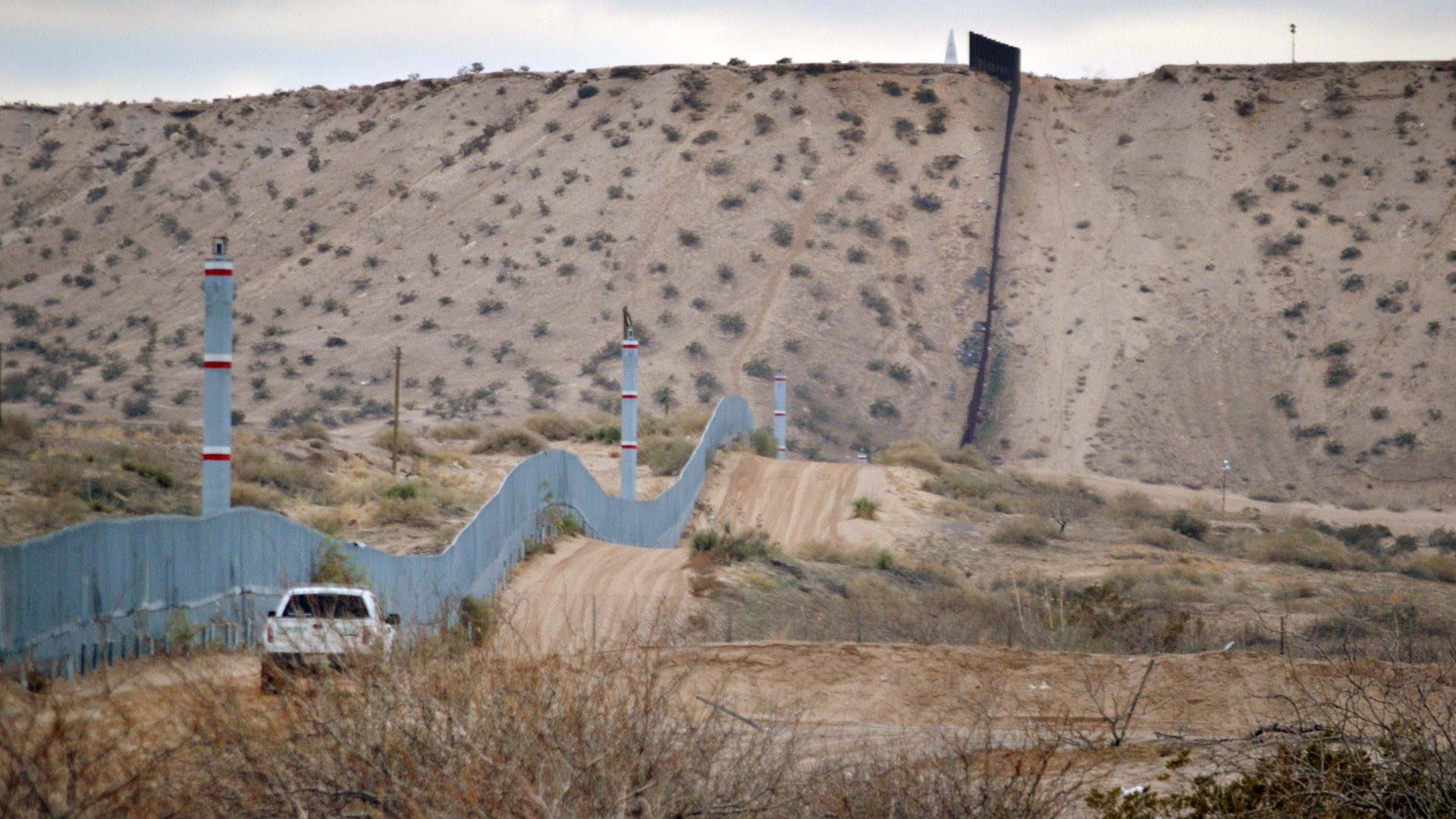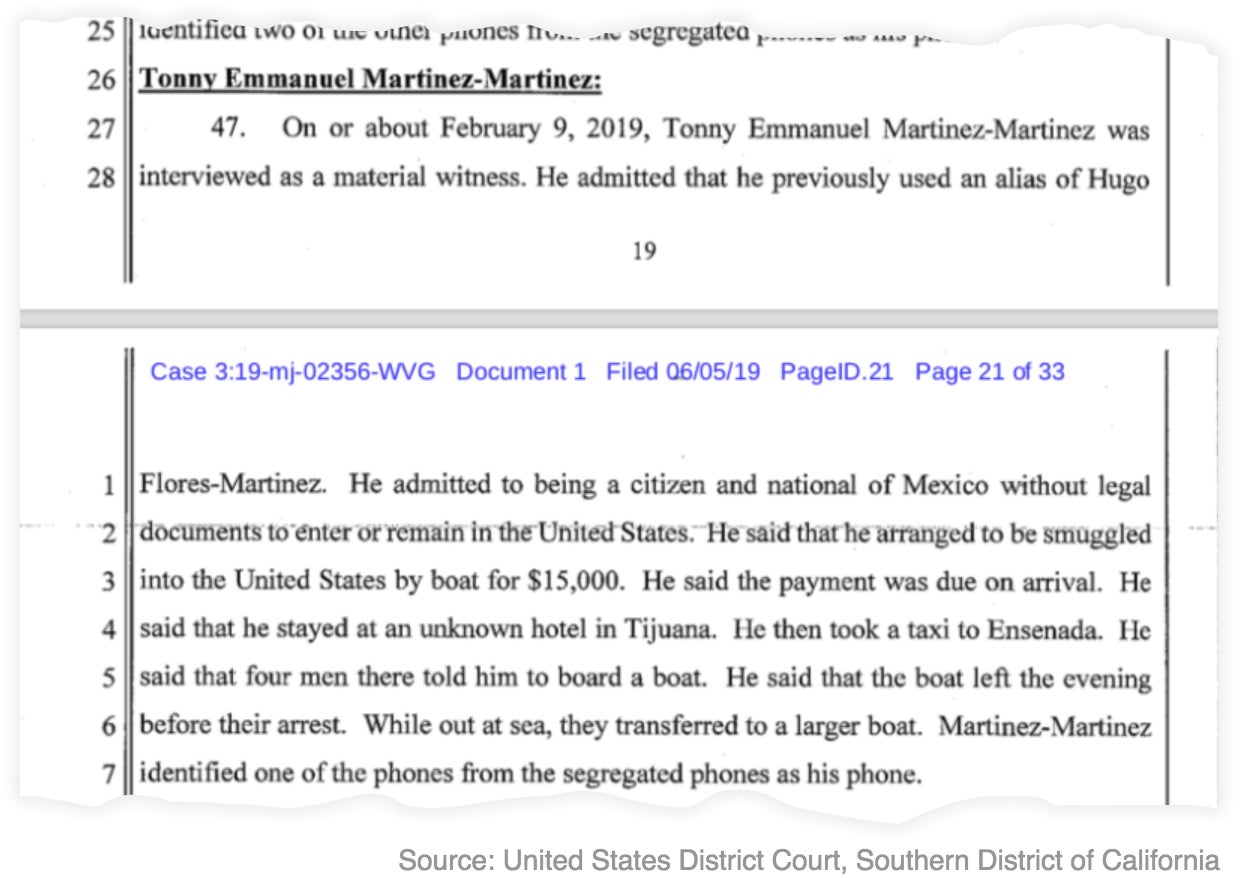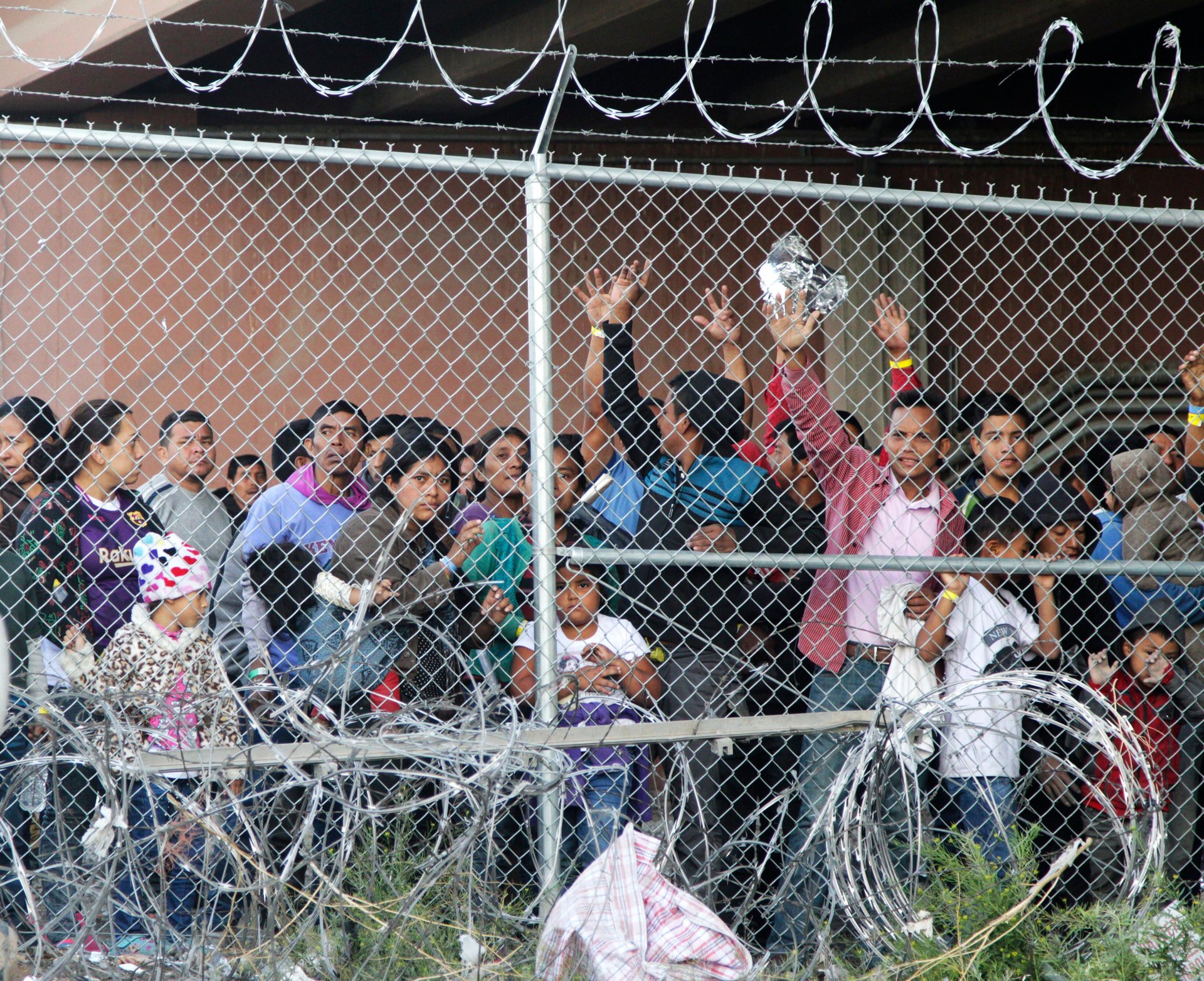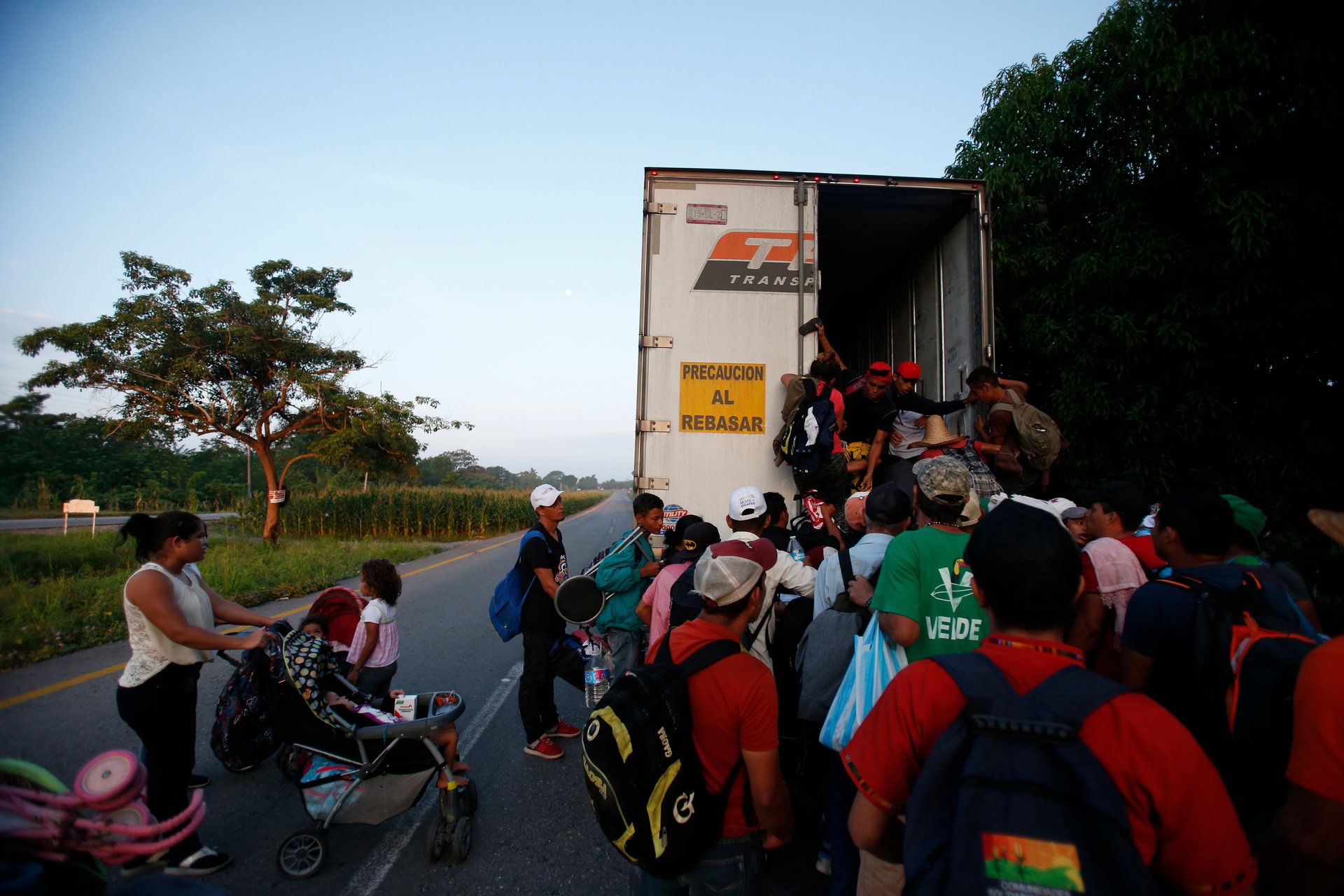This is how much it costs to be smuggled over the US border
When a Freightliner tractor-trailer pulled up to a US Border Patrol checkpoint just north of Laredo, Texas, the agent working the lane thought he recognized the driver as a person of interest. A record check revealed the passenger had two active warrants for arrest on charges of cocaine sales and assault.


When a Freightliner tractor-trailer pulled up to a US Border Patrol checkpoint just north of Laredo, Texas, the agent working the lane thought he recognized the driver as a person of interest. A record check revealed the passenger had two active warrants for arrest on charges of cocaine sales and assault.
The driver and his passenger told agents they were the only two onboard. But the Border Patrol scanned the locked trailer with an X-ray device. The officer noticed “silhouettes” he thought resembled humans, according to a criminal complaint dated May 28. He found 18 people, all undocumented.
While the discovery wasn’t in itself particularly unusual, their cases shed further light on the prices people are willing to pay for safe passage into the United States.
In 2017, sources estimated the cost at somewhere between $4,000 and $10,000. The commonly accepted range now falls between $6,000 and $10,000, according to an April 2019 study by the Rand Corporation.
Prices vary “according to how you want to cross when you get to the border,” Wallie Mason, a California immigration attorney whose clients who have entered the country this way, told Quartz. “People pay according to how far the coyotes take them, and in what manner. Also, what the coyotes think they can get from the individual customer.”
Rates have risen in recent years not necessarily due to increased enforcement, but rather the perception of a crackdown under US president Donald Trump. This gives smugglers—coyotes—an opportunity to charge more money. As Quartz previously reported, Border Patrol apprehensions spiked the month before the 2016 US presidential election and stayed high through Trump’s inauguration. However, the Rand study found that although US officials “have cited increasing smuggling costs as evidence of enforcement effectiveness in the past…rising smuggling costs could also indicate increased demand for smuggling services whose supply is limited, or changing characteristics of the marketplace such as the formation of cartels by smugglers.”
Escalating prices
One of the migrants in the back of the Freightliner, a Guatemalan national, told the agents he had paid $11,300 to be smuggled from the banks of the Rio Grande to a Laredo stash house and on to Houston. Another, from Mexico, said he was paying $7,000 to get from the Rio Grande to the stash house in Laredo and then on to Louisiana. A third was paying a total of $7,000 to be smuggled to Tennessee. A Mexican national headed to Atlanta said his parents were footing the bill for his journey and didn’t know how much it cost.
A federal search warrant application filed June 5 reveals even steeper fees. In it, one Mexican national told authorities he was paying a coyote $15,000 to smuggle him across the border from Tijuana by boat. The cash due on arrival, he said.

Prior to the late 2000s, Mexican and Central American migrants said that getting to a staging area along the border used to cost less than $100, according to a September 2017 report issued by the US Department of Homeland Security’s (DHS) Office of Immigration Statistics. Smugglers would then charge each migrant another $1,000 to $3,000 to get to their final location. Nowadays, getting to a border staging area from Mexico or Central America can cost migrants as much as $1,200, and up to $8,000 to get from there to their destinations, the DHS report says.

As for profits, the recent Rand study cautions that the “extremely limited data” makes it impossible to “generate a credible estimate.” Still, there are some who can count on getting paid, no matter what. In the end, as one researcher told the Washington Post last year, the biggest fees go to corrupt police and border guards who are paid to look the other way when smugglers pass by.
“To get migrants through segments of the border you do not need organized crime,” she said. “You need an immigration agent.”
A lifetime of debt
“They can build as many walls as they want,” one migrant told the New York Times in 2018, referring to the impermeable barrier Trump has promised his political base. “They can send as many soldiers to the border as they want, but a people’s need and desire for a better life is stronger.”
Smugglers range from independent operators to more formal networks. Unlike cocaine, for example, which Rand describes as a “near-homogeneous commodity,” people comes in all shapes and sizes with varying physical abilities and financial resources. So a market exists to service the full spectrum of potential customers, from “all-inclusive” packages that can cost in excess of $10,000 to “pay as you go” arrangements for migrants who have less money.
There are specialized services catering to children, pregnant women, and the elderly that minimize the scaling of walls and long hikes through harsh terrain, researchers say. Instead of walking, or taking a crowded public bus, migrants who can afford it might opt for a smuggler that uses taxis or a private vehicle. Some choose to pay extra for counterfeit travel documents, which can reduce the risk of detection. According to ICE, undocumented migrants often pay extra to be smuggled across the border in a tractor-trailer “because the chance of making it across the border is greater than on foot.”

One smuggler said he helped his Central American customers blend in by giving them false Mexican ID cards and teaching them the first stanza of the Mexican national anthem. That way, if someone gets caught in the United States, they might only be sent back to Mexico, where they’ll be better positioned to turn around and try again.
As a source told the Rand researchers, “The more money you have, the better service you get.”
If they make it, the debt a migrant incurs can follow them for years.
“These kids who are in high school owe tens of thousands of dollars because they came to be with their mom or their dad,” the director of a nonprofit that works with immigrants told Public Radio International last year. “They are trying to make this whole new calculus that I have never had to consider—about how they are going to go to work at night and school during the day.”